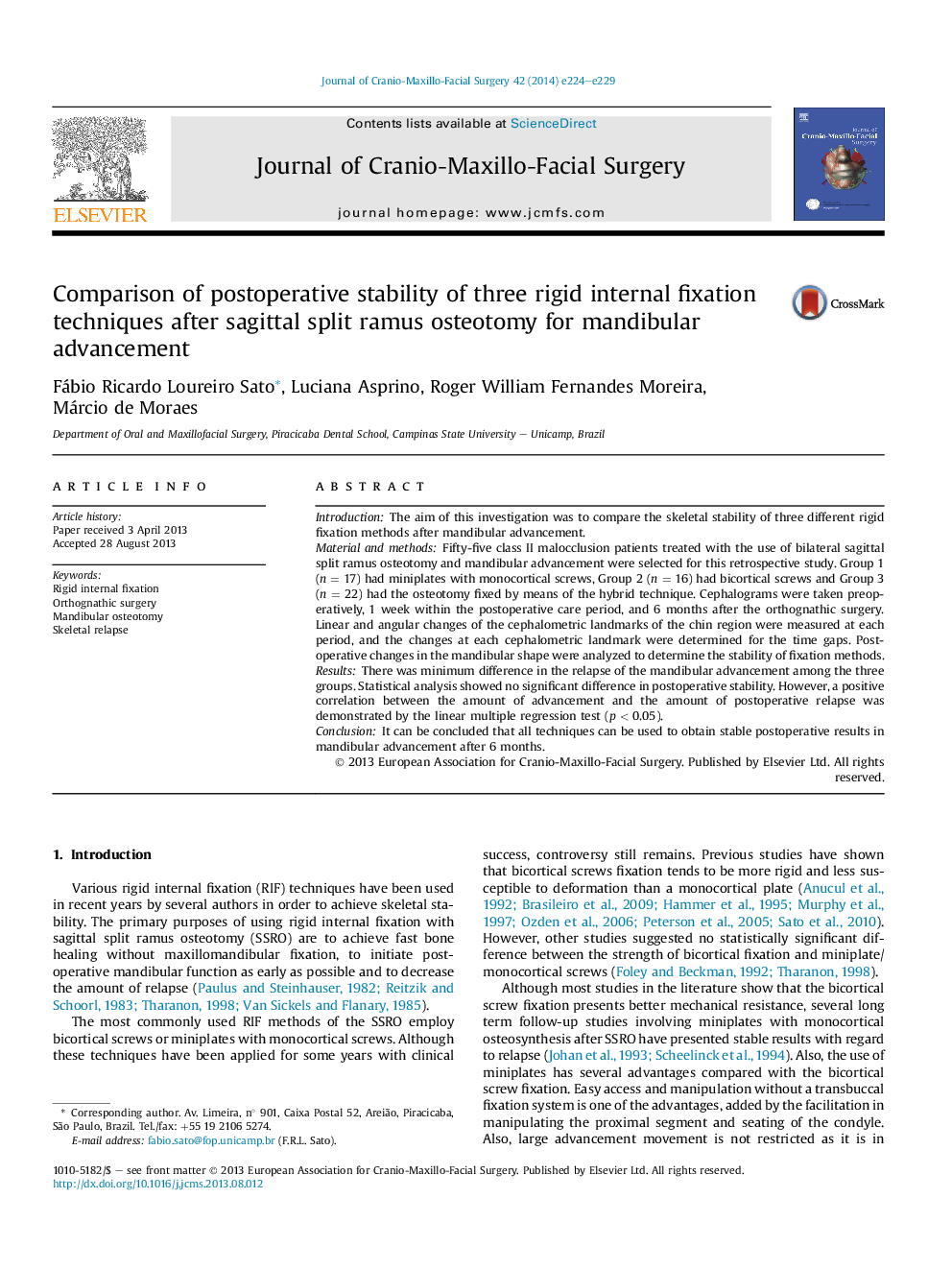| Article ID | Journal | Published Year | Pages | File Type |
|---|---|---|---|---|
| 3142631 | Journal of Cranio-Maxillofacial Surgery | 2014 | 6 Pages |
IntroductionThe aim of this investigation was to compare the skeletal stability of three different rigid fixation methods after mandibular advancement.Material and methodsFifty-five class II malocclusion patients treated with the use of bilateral sagittal split ramus osteotomy and mandibular advancement were selected for this retrospective study. Group 1 (n = 17) had miniplates with monocortical screws, Group 2 (n = 16) had bicortical screws and Group 3 (n = 22) had the osteotomy fixed by means of the hybrid technique. Cephalograms were taken preoperatively, 1 week within the postoperative care period, and 6 months after the orthognathic surgery. Linear and angular changes of the cephalometric landmarks of the chin region were measured at each period, and the changes at each cephalometric landmark were determined for the time gaps. Postoperative changes in the mandibular shape were analyzed to determine the stability of fixation methods.ResultsThere was minimum difference in the relapse of the mandibular advancement among the three groups. Statistical analysis showed no significant difference in postoperative stability. However, a positive correlation between the amount of advancement and the amount of postoperative relapse was demonstrated by the linear multiple regression test (p < 0.05).ConclusionIt can be concluded that all techniques can be used to obtain stable postoperative results in mandibular advancement after 6 months.
